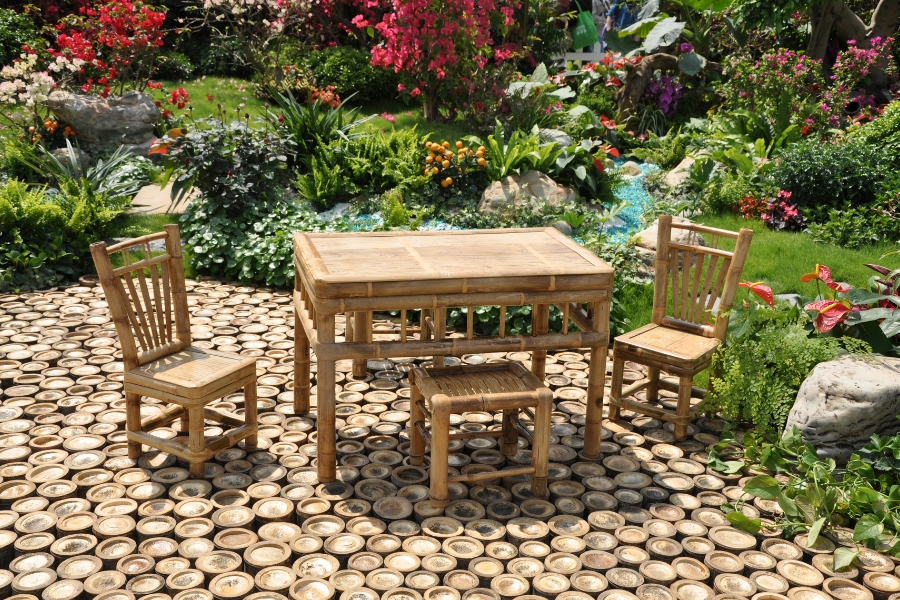
How Sustainable Woodworking Can Benefit Both You and the Environment
Choosing custom woodworking for your home doesn’t just allow you to create beautiful, handcrafted furniture and cabinetry – it also represents an opportunity to make environmentally responsible decisions.
With that in mind, sustainable woodworking is a great option for environmentally conscious consumers, as it combines expert craftsmanship with eco-conscious materials and processes, ensuring your choices will positively impact our planet.
But what exactly constitutes sustainable woodworking, and how can you confidently make truly eco-friendly decisions?
If you’re in the market for something made using custom woodworking, and you find yourself asking these kinds of questions, then you’re going to want to keep reading.
Because this article explores what sustainable woodworking is, along with the kinds of materials and processes it uses, and it explains what you should consider when choosing this option, and how this kind of eco-conscious woodworking can benefit both you and the environment.
Understanding Sustainable Woodworking
Sustainable woodworking involves selecting materials and adopting practices that minimize negative environmental impacts.
It’s a thoughtful approach to creating custom furniture, cabinetry, and other wooden elements that emphasizes renewable resources, responsible forestry, and environmentally friendly finishes.
Unlike conventional woodworking, which might not account for future resource availability or other environmental implications, eco-friendly woodworking prioritizes how each action affects ecosystems and future generations.
And this includes everything from sourcing raw materials to manufacturing and everything else that’s involved in creating the finished product.
Eco-Friendly Materials for Sustainable Woodworking

The foundation of sustainable woodworking begins with choosing the right materials.
With that in mind, if you’re looking for eco-friendly alternatives to traditional woodworking materials, you should consider these options:
Reclaimed Wood
Reclaimed wood significantly reduces deforestation by repurposing timber that would otherwise end up discarded.
What’s more, each piece of reclaimed wood has a unique history, which enhances its charm and helps to create truly distinctive furniture.
Locally Sourced Wood
Buying locally sourced wood is a great eco-friendly option, as it helps to reduce emissions related to transportation.
Moreover, it supports local economies, promotes responsible forestry, and fosters community awareness and involvement in sustainability.
Certified Sustainable Wood
If you decide to go with wood that’s been certified by the Forest Stewardship Council (FSC), this will help you ensure it comes from responsibly managed forests.
FSC-certified forests maintain ecological integrity, protect biodiversity, and help to uphold the rights of indigenous communities.
Bamboo
Although it’s technically a form of grass, bamboo is an incredibly renewable resource that grows rapidly and is commonly used to build furniture.
Aside from its environmentally friendly qualities, it also offers strength and durability, combined with an appealing contemporary look, which makes it an excellent material for modern furnishings and cabinetry.
Salvaged Lumber
Salvaged lumber refers to wood rescued from demolished structures or felled urban trees.
Using salvaged lumber is another great eco-friendly option, as it helps to reduce environmental waste and offers distinctive textures and unique characteristics, which are ideal for custom woodworking projects.
Sustainable Finishes and Adhesives
When it comes to sustainable woodworking, selecting the right wood is just the beginning, and ensuring eco-friendly finishes and adhesives are used is equally important.
That being said, here’s what you want to look for regarding this aspect of the sustainable woodworking process:
Low-VOC and Zero-VOC Finishes
Volatile Organic Compounds (VOCs) in traditional finishes can negatively impact air quality and contribute to pollution.
But low or zero-VOC finishes are healthier for both your home environment and the planet.
Natural Oils and Waxes
Finishes derived from natural oils (such as linseed, tung, or hemp oil) and waxes (such as beeswax) provide non-toxic alternatives.
They enhance wood’s natural beauty without adverse environmental consequences.
Water-Based Adhesives
Traditional adhesives often contain formaldehyde, which is a known toxin.
Water-based adhesives, on the other hand, help to eliminate harmful emissions and are safer for both craftsmen and homeowners.
Benefits of Sustainable Woodworking for the Environment
When you choose eco-friendly woodworking, it provides a ton of benefits for the environment, including:
- Preventing Deforestation: Sustainable practices help preserve vital forest ecosystems, protecting biodiversity and preserving resources for future generations.
- Reducing Overall Impact: Locally sourced materials and eco-friendly products can dramatically cut transportation emissions, reducing the overall environmental impact.
- Supporting Biodiversity: Sustainable forestry practices maintain habitats that are crucial for wildlife survival, and this helps to ensure ecosystems can thrive.
- Improving Air Quality: Non-toxic finishes and materials help to enhance indoor air quality, contributing to healthier living spaces and fewer health risks.
Practical Steps for Choosing Sustainable Woodworking

Making sustainable woodworking decisions can be straightforward if you know the right steps.
Having said that, here’s some additional advice that will help you consider your options and make the right decisions as you navigate this process:
Conduct Research
Start by researching materials, finishes, and providers thoroughly, making sure that you understand the certifications and labels that represent sustainability.
Being informed helps you distinguish genuinely eco-friendly products from misleading claims.
Verify Certifications
When looking for sustainable sources of wood, you should make sure to always look for reputable certifications like FSC (Forest Stewardship Council) or PEFC (Programme for the Endorsement of Forest Certification).
These certifications provide assurance that the wood you’ve chosen is sourced from sustainably managed forests.
Source Locally
If you want to do the environment a favour, make sure to choose locally sourced wood whenever you possibly can.
This supports local forestry practices, helps to reduce transportation emissions, and contributes positively to your local economy.
Visit Workshops
If possible, you should visit local woodworking shops or studios.
Observing firsthand how these businesses operate and the materials they use can help you confirm their sustainability practices.
Check Reputations
If you want the absolute best results with minimal environmental impact, you should work with suppliers and artisans who have solid reputations for sustainability.
Online reviews, testimonials, and direct conversations can provide valuable insights on this.
Choose Quality Over Quantity
High-quality craftsmanship not only ensures durability but also reduces the need for frequent replacements.
What’s more, investing in these kinds of quality items can help you to minimize waste, which is always great for the environment.
Reduce Waste
If you really want to help the environment, you should make a point of only hiring businesses that prioritize waste reduction.
So, if there’s a carpenter you’re considering, you should ask how they manage offcuts and waste materials – ideally, these should be repurposed or recycled rather than discarded.
Long-Term Benefits of Sustainable Woodworking
Sustainable woodworking offers benefits that go far beyond your immediate satisfaction.
Among other things, you’re fostering healthier ecosystems, supporting ethical forestry, and helping to create lasting, durable products.
Ultimately, this kind of eco-friendly woodworking represents much more than selecting environmentally-friendly materials, and it signifies a broader lifestyle choice.
Embracing sustainable woodworking illustrates your dedication to environmental stewardship, healthier living spaces, and a legacy of sustainability for future generations.
Are you looking for a carpenter in Kelowna?
Our master woodworker, Andy Ingram, has over 30 years of experience. For more details, contact us or check out our portfolio to see what we’re capable of creating.